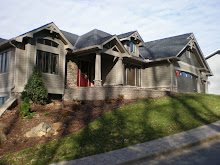The thermal protection of a home is essential; controlling durability, cost of operation and homeowner comfort. Fiberglass insulation is the standard bearer. The ubiquitous bales of pink and yellow fiberglass insulate more than 90% of the new homes built in the United States. But homeowners have many good choices. Plastic foams, rock wool, cellulose and even cotton insulation are readily available. Insulation materials come in many forms. They are sprayed, stapled, blown, nailed or simply laid in place. The choices can be difficult to sift, but cellulose insulation passes as a strong contender.
The common standard by which insulation is measured, R-value, is the level of resistance to heat flow. R-value measures the ability of a material to impede the flow of heat along the continuous chain of matter that makes up a solid material. Most of a homes heat is typically lost through conduction. Cellulose is not unusual in this regard. Like many insulation materials, it provides an R-value of approximately R-3.5 per inch of thickness. But, air leakage through cracks, voids, and gaps is important, responsible for approximately 1/3 of a homes heat loss. Cellulose is a superb air-blocker. Heat and comfort are also lost through convection; when drafty currents of air within the house, wall cavities or attics, move heat to other locations. This is technically different from air leakage where the heated air mass is actually expelled from the home. Tightly packed cellulose provides a thermally efficient, cost effective, and comfortable solution.
Cellulose is a green product. It is made of 80% post-consumer recycled newsprint. The fiber is chemically treated with non-toxic borate compounds (20% by weight) to resist fire, insects and mold. The Cellulose Insulation Manufacturers Association (CIMA) claims that insulating a 1500 ft2 house with cellulose will recycle as much newspaper as an individual will consume in 40 years.
Cellulose insulation provides greater resistance to air leakage and for me this is a biggie. The fiberglass industry points to tests demonstrating air leakage can be controlled with dedicated air-barrier systems. True. Install perfectly continuous sheathing, caulks, gaskets and sealants and you will block air leakage effectively with fiberglass or cellulose. But the simple fact remains: densely packed cellulose blocks air better than fiberglass. Fiberglass relies on trapped air for its insulation value. Cellulose is made from wood fiber and the cellular structure of wood is naturally more resistant to the conduction of heat. When dedicated air-barrier systems are not installed perfectly (which they seldom are), cellulose wins. Visit Advantage Development Co. today at http://www.advdevco.com/ and see Why We Are The Better Builder in Asheville & the surrounding Western North Carolina area.
Subscribe to:
Post Comments (Atom)


No comments:
Post a Comment